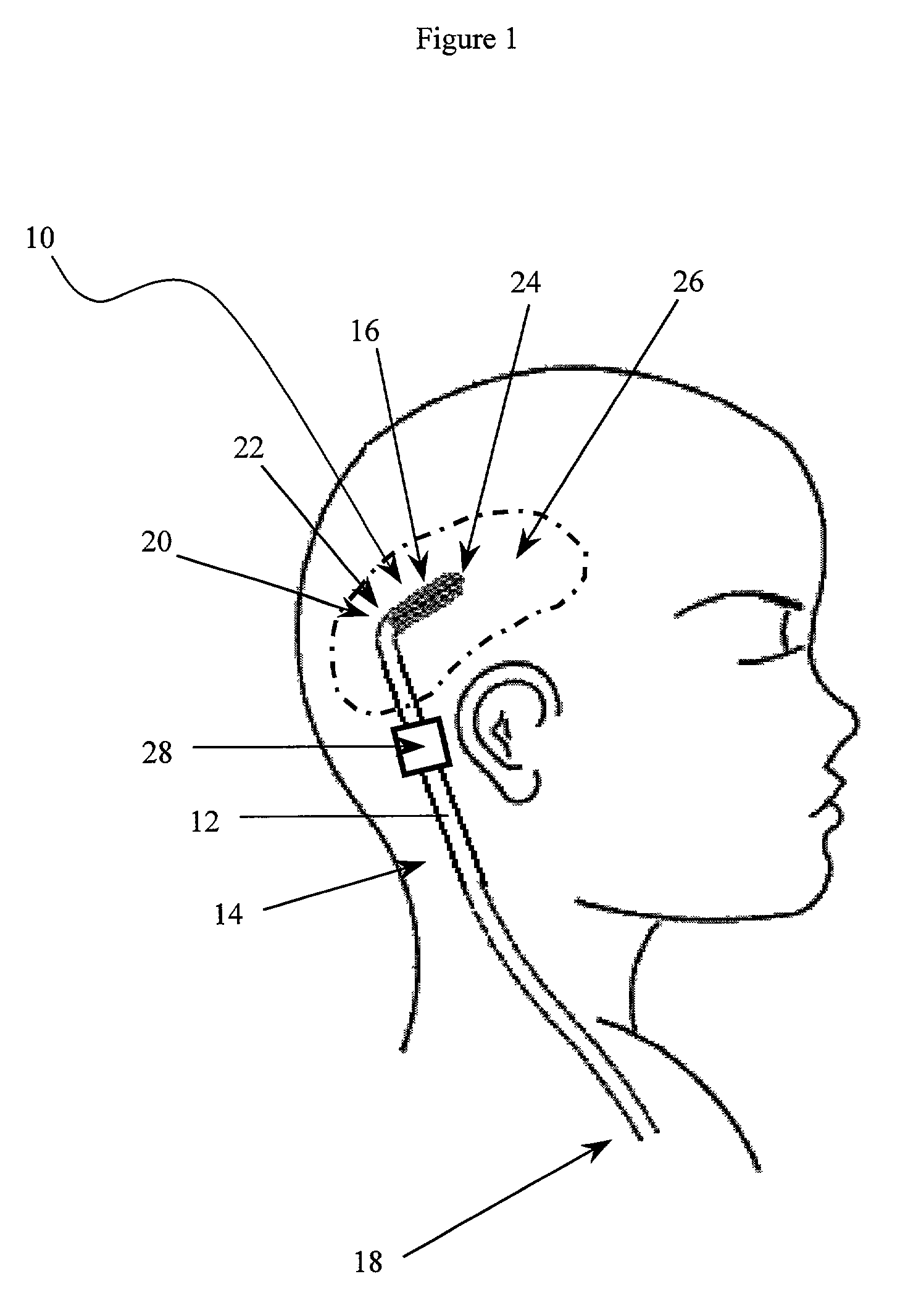Anti-block catheter
- Summary
- Abstract
- Description
- Claims
- Application Information
AI Technical Summary
Benefits of technology
Problems solved by technology
Method used
Image
Examples
Embodiment Construction
[0020]The implantable fluid management device of the present invention facilitates the removal or introduction of fluid to a treatment site. By way of example, a distal portion of the device can be implanted in the ventricle of the brain to drain excess fluid from within the ventricles, directing it to another site in the patient's body. The fluid management device of the present invention is advantageous as its construction enables fluid to be drained while minimizing the risk that the drainage catheter will be blocked or occluded.
[0021]As shown in FIG. 1, the implantable fluid management device 10 includes a catheter 12 having proximal and distal portions 14, 16 with a fluid passageway extending therebetween. The proximal portion 14 of the catheter 12 has a first, open end 18 and a transition end 20 and a lumen 30 (FIGS. 2A, 3A and 3B) connecting the two ends. The distal portion 16 of the catheter 12 is defined by an outer wall 44 (FIGS. 4 and 5) and has a first, connecting end 22...
PUM
 Login to View More
Login to View More Abstract
Description
Claims
Application Information
 Login to View More
Login to View More - R&D
- Intellectual Property
- Life Sciences
- Materials
- Tech Scout
- Unparalleled Data Quality
- Higher Quality Content
- 60% Fewer Hallucinations
Browse by: Latest US Patents, China's latest patents, Technical Efficacy Thesaurus, Application Domain, Technology Topic, Popular Technical Reports.
© 2025 PatSnap. All rights reserved.Legal|Privacy policy|Modern Slavery Act Transparency Statement|Sitemap|About US| Contact US: help@patsnap.com



